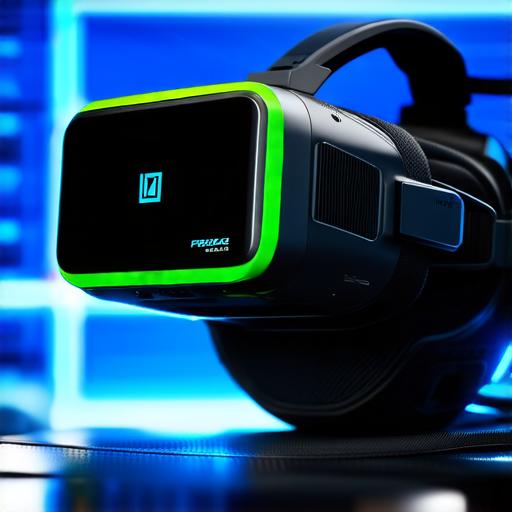Here’s the corrected HTML code for the article:

Virtual reality (VR) is an immersive technology that allows users to experience a computer-generated environment as if they were actually there. It has been around for over 60 years, but it’s only in the last few years that VR has really taken off and become accessible to the general public.
The History of Virtual Reality
Early Days (1960s-1970s)
The origins of VR can be traced back to the 1960s when researchers at MIT first started experimenting with head-mounted displays (HMDs). These devices allowed users to view a computer-generated environment in real time and were used for research purposes.
One of the earliest examples of VR was the “Sword of Damocles,” an HMD developed by Ivan Sutherland in 1968. The device consisted of a large box with a screen mounted on top, which users would look into through a series of lenses. While not very comfortable or practical, the Sword of Damocles was an important step forward for VR technology.
Commercial Launches (1990s-2000s)
In the 1990s, several companies launched commercial VR systems aimed at the gaming and entertainment industries. One such system was the “Virtual Boy,” developed by Nintendo in 1994. The Virtual Boy used stereoscopic displays to create a sense of depth and allowed users to play games in a virtual environment.
Another commercial VR system was the “HMD-1” developed by Sega in 1997. The HMD-1 used a head-mounted display and motion tracking sensors to allow users to move around in a virtual world.
However, these early commercial VR systems were not very successful and struggled to gain traction in the marketplace.
Modern Era (2010s-Present)
In recent years, there has been a resurgence of interest in VR technology, driven by advances in computer hardware and software. This has led to the development of a range of new VR devices, including headsets, handheld controllers, and motion capture systems.
One of the most popular VR devices on the market today is the Oculus Quest 2, developed by Facebook-owned Oculus VR. The Quest 2 uses wireless connectivity to allow users to move around freely in a virtual environment and has been widely praised for its affordability and ease of use.
Other notable VR systems include the HTC Vive, PlayStation VR, and Samsung Gear VR. These devices are typically used for gaming, but they can also be used for other applications such as training simulations, education, and design.
The Future of Virtual Reality
As VR technology continues to evolve, it’s likely that we will see even more innovative uses for the technology in the future. Some of the key trends shaping VR development today include:
- Wireless Connectivity: One of the biggest challenges with VR is the need for powerful computers and high-speed internet connections to support the technology. However, recent advancements in wireless connectivity have made it possible to create more affordable and accessible VR systems that don’t require a dedicated PC or a fast internet connection.
- Eye Tracking: Eye tracking technology is another area of innovation that could significantly improve the VR experience. By tracking where users look, eye tracking systems can adjust the graphics and audio in real-time to create a more immersive experience.
- Haptic Feedback: Haptic feedback technology allows users to feel physical sensations in a virtual environment, making the experience more realistic. This can include things like vibrations, resistance, and even temperature changes.
Case Studies: Real-World Applications of Virtual Reality
Virtual reality has already found a number of applications outside of gaming and entertainment. Here are a few examples:
Training and Simulation
One of the most promising applications for VR is in training and simulation. By creating realistic virtual environments, VR can provide a safe and controlled environment for people to practice skills and learn new techniques.
For example, medical students can use VR simulations to practice surgeries, while pilots can use VR simulations to train for flight. There are also a number of military applications for VR, including simulated combat training and virtual reality-based intelligence gathering.
Education
Virtual reality can also be used in education to create more engaging and interactive learning experiences. By allowing students to explore virtual environments and interact with digital objects, VR can make learning more fun and memorable.
For example, some schools are using VR to teach history by allowing students to explore ancient civilizations and artifacts in a virtual environment. Other applications include using VR to teach science concepts like biology and physics, and even language learning.
Design and Architecture
Virtual reality can also be used in design and architecture to create more realistic and interactive prototypes. By allowing designers to experience their creations in a virtual environment, they can make more informed decisions and iterate on their designs more quickly.
For example, architects can use VR to explore different layouts and design options for a building, while furniture designers can use VR to test out new designs and see how they look in real life.
FAQs: Answering Your Questions About Virtual Reality
Is virtual reality addictive?
Virtual reality can be addictive for some people, but it’s not necessarily any more addictive than other forms of technology like video games or social media. It’s important to use VR in moderation and take breaks as needed to avoid overuse.
Can virtual reality cause motion sickness?
Yes, some people can experience motion sickness when using VR. This is usually caused by disorientation or a mismatch between what the user sees and experiences in the virtual environment. To reduce the risk of motion sickness, it’s important to use VR in a well-lit room with enough space to move around, and to take breaks as needed.
How expensive is virtual reality technology?
Virtual reality technology can be expensive, but there are also some more affordable options available. Entry-level VR systems like the Oculus Quest 2 cost around $300, while higher-end systems like the HTC Vive or PlayStation VR can cost upwards of $1,000. It’s important to do your research and compare prices before making a purchase decision.
Can virtual reality be used for travel?
Yes, virtual reality can be used for travel by allowing users to explore different parts of the world in a virtual environment. This can be a great way to experience new cultures and see sights that you might not otherwise have the opportunity to visit.
Summary: The Future of Virtual Reality is Bright
Virtual reality technology has come a long way since its early days, and it’s likely that we will see even more innovative uses for the technology in the future. Whether you’re interested in gaming, education, design, or something else entirely, there’s no doubt that virtual reality is an exciting and rapidly evolving field.
